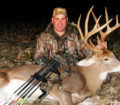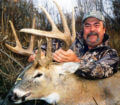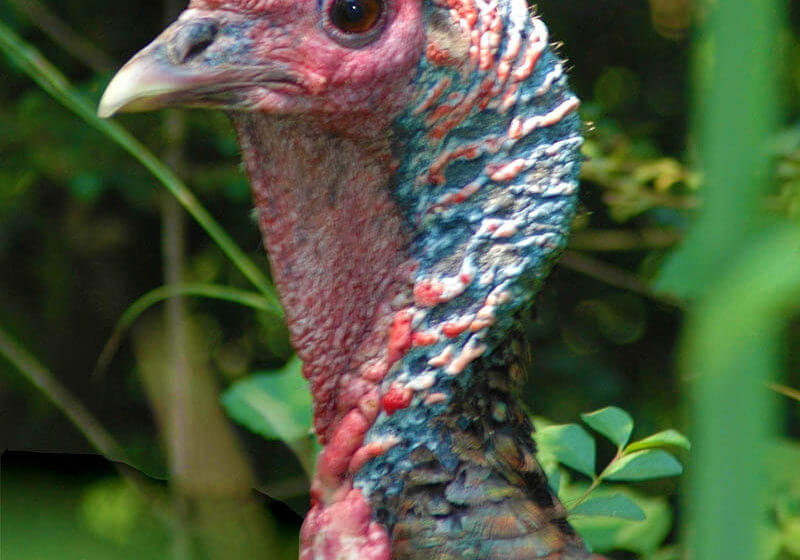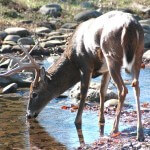Editor’s Note: Can you identify a buck fast and get off a clear shot before he vanishes in thick brush? Although not easy, there are ways you can speed-up your reaction time. How does a batter see a ball coming toward the plate at 90 mph, and time his swing to hit the ball? Travis Fryman, who played with the Detroit Tigers and the Cleveland Indians for 13 years, batting in 1,022 runs, making 223 home runs and five times earning MLB All Star status, says, “I not only can see the ball as it leaves the pitcher’s hand, but I also can see the seams of ball as it rotates toward me.” Fryman, a longtime hunter and fisherman, uses his vision skills he sharpened working with a developmental optometrist on his baseball hitting to hunt more effectively. The quicker you can see and identify a buck and determine the direction he’s traveling, the quicker and more accurately you’ll shoot. You must understand the difference between eyesight and vision. If you start now, by the time deer season arrives in the fall, your ability to see deer greatly will have improved. NFL teams use developmental optometrists to teach quarterbacks to spot open receivers. One friend of our son’s went to a developmental optometrist for 6 months to improve his vision to get accepted into the Navy pilot program.
 The effort to improve your ability to see and take deer in the woods should begin with a visit to a developmental optometrist. According to Optometry Advisors, some visual disabilities only can be alleviated by prescription lenses or visual therapy under a doctor’s direction. Developmental optometrist Dr. Gary Etting (see Days 2, 3, 4) recommends these exercises that a hunter can perform at home and in the woods to enhance deer-hunting skills.
The effort to improve your ability to see and take deer in the woods should begin with a visit to a developmental optometrist. According to Optometry Advisors, some visual disabilities only can be alleviated by prescription lenses or visual therapy under a doctor’s direction. Developmental optometrist Dr. Gary Etting (see Days 2, 3, 4) recommends these exercises that a hunter can perform at home and in the woods to enhance deer-hunting skills.
* An instrument called a tachistoscope is used by a doctor to flash an image on a screen. The patient is asked to describe the picture after seeing it for only a fraction of a second. You can imitate this exercise, and it will help you learn to assimilate visual information quickly. In the woods, try to spot all the animals you pass, and notice the direction they are facing, their direction of flight and distance from you.
* Hunters using rifles and iron sights often need to change the focus of their eyes from the sights to the target and vice versa within a fraction of a second. You can improve this skill at home, too. Make sure to use iron sights like the ones from Ozark Armament that are complete with included mounting bolts.
Cut a letter from a newspaper headline, and put it up on the wall at eye level. Cut a paragraph out of the classified ads, and hold it in your hand. Move 10- to 12-feet away from the wall, hold the small-print ad at eye level, and look back and forth between the letter on the wall and the ad in your hand, focusing clearly on each. Work to reduce your eyes’ adjustment time.
* Another good exercise is to draw a circle the diameter of a rifle scope on a clear piece of plastic. Look through the circle at the letter you’ve placed on the wall previously. The circle will become fuzzy. Then look back at the circle, and the letter will become fuzzy. Rapidly changing your point of focus will enable you to aim more quickly.
* You can suspend a ball from the ceiling to improve your perception. Rotate your head, keeping your eye on the ball. This will teach you to keep your eye on a standing deer, while you are in motion. If you swing the same ball from side to side and rotate your head while keeping your eye on the ball, you will train yourself to keep your eye on a deer when both you and the animal are moving.
* You can practice range estimation on walks. Quickly pick out an object in the distance or nearby, and then pace it off or use a range finder to check your estimate. Knowing the actual length of your stride in inches is important. Don’t assume the distance is exactly a yard.
 * You can keep your eyes focused straight ahead and see how much your side vision can tell you about approaching pedestrians – where they are in relation to you and to other people on the street, what they are wearing, and how they are walking, while you’re walking down the street. If you are having difficulties following your path you can use proclear contacts to help you see your surroundings clearly. Then before hunting season begins, try this exercise in the field, with fellow hunters taking the roles of approaching pedestrians. With repeated practice, you will learn to make better use of your peripheral vision, and you’ll maintain an awareness of what’s going on around you, while keeping your attention on the gunsight. This vision skill gives the hunter who’s swinging on game extra time to take accurate aim by helping him to spot a fast-moving target before it moves into the line of fire.
* You can keep your eyes focused straight ahead and see how much your side vision can tell you about approaching pedestrians – where they are in relation to you and to other people on the street, what they are wearing, and how they are walking, while you’re walking down the street. If you are having difficulties following your path you can use proclear contacts to help you see your surroundings clearly. Then before hunting season begins, try this exercise in the field, with fellow hunters taking the roles of approaching pedestrians. With repeated practice, you will learn to make better use of your peripheral vision, and you’ll maintain an awareness of what’s going on around you, while keeping your attention on the gunsight. This vision skill gives the hunter who’s swinging on game extra time to take accurate aim by helping him to spot a fast-moving target before it moves into the line of fire.
* You can learn to overcome optical illusions in nature that play havoc with your depth perception. Haze, for instance, makes things seem farther away than they really are. Or, an animal seen against a very-dark background will seem closer than it is.
* You should pace off the distance of your probable shots when preparing to sit on a stand in unfamiliar territory. Learn to gauge standard distances.– such as the length of a football field – and apply your measure in the field. Learn to judge the size of animals accurately, and use size as a gauge of distance. Keep in mind that dim objects and dark ones seem farther away than they are.
A developmental optometrist can determine in what area a hunter’s visual skill is deficient and then can develop a personalized therapy program to improve those skills. For a listing of doctors in your area, contact the non-profit Optometric Extension Program Foundation at https://www.oepf.org or 410-561-3791. Check out the American Optometric Association (www.aoa.org).
To learn more about hunting deer with John E. Phillips’ Amazon Kindle eBooks, print books and Audible books and Nook books, click here at https://johninthewild.com/books/#deer. You can type in the name of the book and download it to your Kindle, and/or download a Kindle app for your iPad, SmartPhone or computer. For a free download on how to make jerky from venison to provide a protein-rich snack, choose “How to Prepare Venison Jerky: The Ultimate Snack Food” at johninthewild.com/free-books.










